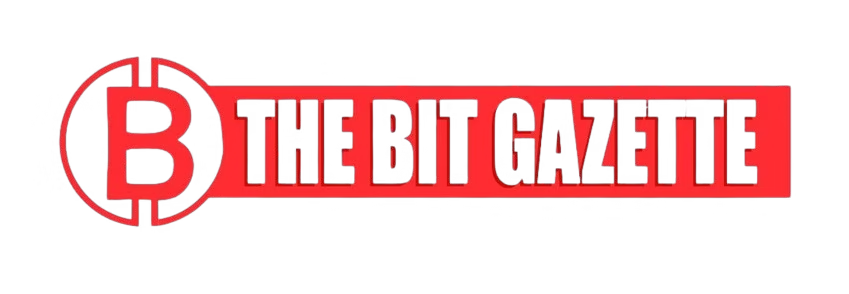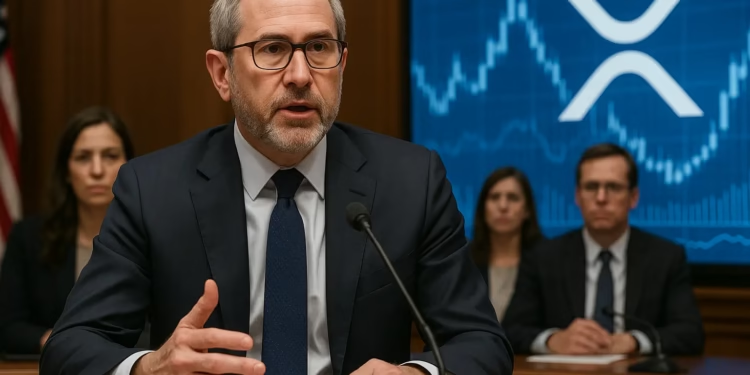XRP climbed above $2.50 on October 25 as blockchain company Evernorth Holdings announced plans to raise more than $1 billion for XRP treasury purchases through a Nasdaq SPAC listing—mirroring MicroStrategy’s Bitcoin accumulation strategy. The rally coincides with Ripple’s completion of its Hidden Road acquisition, now rebranded as Ripple Prime, a prime brokerage platform handling over $10 billion in daily transactions.
The token has gained approximately 8% over the past week, trading at $2.52 at press time with a market cap of $144 billion, making it the fourth-largest cryptocurrency by valuation. The price movement comes despite broader questions about XRP’s role in Ripple’s expanding traditional finance operations.
Evernorth’s $1B XRP accumulation mirrors MicroStrategy playbook
Evernorth Holdings’ planned SPAC merger represents one of the largest announced corporate XRP purchases to date. The company intends to list on Nasdaq under the ticker XRPN and allocate the majority of its raised capital to building an XRP treasury reserve.
The strategy directly parallels MicroStrategy’s approach to Bitcoin, which has created sustained buying pressure and contributed to BTC’s institutional legitimacy. MicroStrategy currently holds over 250,000 Bitcoin worth approximately $27 billion, acquired through a combination of cash reserves, debt offerings, and equity raises.
If Evernorth executes its plan as outlined, the $1 billion in purchases would represent roughly 0.7% of XRP’s current market cap—a significant source of institutional demand that could support price stability and attract additional corporate treasury strategies.
The SPAC merger timeline and regulatory approval process remain unclear, with the company yet to announce definitive closing dates or SEC filing status.
Ripple Prime expands institutional finance footprint
Ripple’s rebranding of Hidden Road to Ripple Prime marks the latest step in the company’s aggressive acquisition strategy throughout 2025. The platform provides prime brokerage services including trade execution, clearing, and settlement for institutional clients across traditional and digital assets.
Hidden Road processes more than $10 billion in daily transaction volume, giving Ripple direct relationships with hedge funds, asset managers, and proprietary trading firms. The acquisition closed in October following an undisclosed purchase price, though industry sources estimate the deal valued Hidden Road between $500 million and $800 million.
Ripple Prime joins GTreasury, which Ripple acquired for $1 billion earlier this year, as part of a broader push into corporate treasury management and financial workflow automation. Combined, Ripple has spent an estimated $2 billion on strategic acquisitions in 2025, positioning the company as a significant player in institutional finance infrastructure.
However, neither Ripple Prime nor GTreasury inherently requires XRP to function, raising questions among investors about whether these platforms will drive meaningful token utility or represent parallel business lines independent of the XRP Ledger ecosystem.
Token utility debate intensifies as RLUSD favors Ethereum
Ripple’s RLUSD stablecoin launch has added complexity to discussions about XRP’s long-term role in the company’s strategy. According to on-chain data from Etherscan and XRPL explorers, approximately 88% of RLUSD’s circulating supply exists on Ethereum, with only 12% on the XRP Ledger.
The distribution pattern has prompted concerns that Ripple may prioritize Ethereum-based payment rails over its native blockchain for stablecoin settlement—potentially diminishing XRP’s relevance in cross-border payments, the use case Ripple has historically emphasized.
Ripple has not publicly addressed the RLUSD distribution imbalance. The company’s RLUSD documentation indicates the stablecoin is designed to operate across multiple blockchains to maximize interoperability, though critics argue this multi-chain approach may fragment liquidity and reduce XRP Ledger adoption.
Despite these concerns, some analysts maintain that XRP retains distinct advantages in Ripple’s ecosystem, particularly for bridge currency functions in On-Demand Liquidity (ODL) corridors where the token facilitates currency conversions between fiat pairs.
Community sentiment remains bullish despite strategic questions
Market commentary from prominent XRP community figures has reinforced bullish sentiment amid Ripple’s expansion. Software engineer and crypto commentator Vincent Van Code stated on social media: “I haven’t seen an investment like XRP in my entire lifetime,” citing institutional developments and pending regulatory clarity.
Technical analyst EGRAG, known for XRP price predictions, added: “XRP shows no bearishness,” pointing to on-chain metrics and accumulation patterns as evidence of continued strength.
However, these optimistic views contrast with skepticism from analysts at traditional finance firms, who question whether XRP’s price performance can sustain without clearer token utility in Ripple’s acquired platforms.
XRP ETF approvals delayed until December
Multiple spot XRP exchange-traded fund applications have faced delays due to the recent U.S. government shutdown, pushing approval windows from October into late November and December 2025.
Grayscale, Bitwise, 21Shares, and Canary Capital have pending filings with the Securities and Exchange Commission. Analysts widely expect approval following Ripple’s legal settlement with the SEC in early 2025, which resolved outstanding questions about XRP’s securities status.
The settlement required Ripple to pay $125 million in civil penalties but affirmed that XRP sales on secondary markets do not constitute securities transactions—a key distinction that cleared the path for ETF products and institutional adoption.
Bloomberg ETF analyst James Seyffart estimated a 70% probability of XRP ETF approval by year-end, contingent on normal SEC review processes resuming after the government shutdown concludes.
What comes next for XRP
The convergence of institutional demand signals, acquisition-driven expansion, and pending ETF approvals positions XRP at a pivotal moment. However, the token’s long-term value proposition increasingly depends on whether Ripple can demonstrate meaningful integration between its acquired platforms and the XRP Ledger.
Key developments to watch include:
- Evernorth’s SPAC timeline: Definitive merger agreements and SEC approval will determine whether the $1 billion XRP purchase materializes and on what schedule.
- Ripple Prime integration: Whether the platform incorporates XRP for settlement, collateral, or other functions will signal how central the token remains to Ripple’s institutional strategy.
- RLUSD adoption metrics: Growth in RLUSD usage, particularly on the XRP Ledger versus Ethereum, will provide insight into Ripple’s priorities.
- ETF launch dates: Approved products would unlock retail and institutional access through traditional brokerage accounts, potentially driving significant new demand.
For now, XRP’s price action reflects optimism about institutional developments, but sustained growth will require Ripple to clarify the token’s role in its evolving business model—a question that remains unresolved as the company expands deeper into traditional finance.











